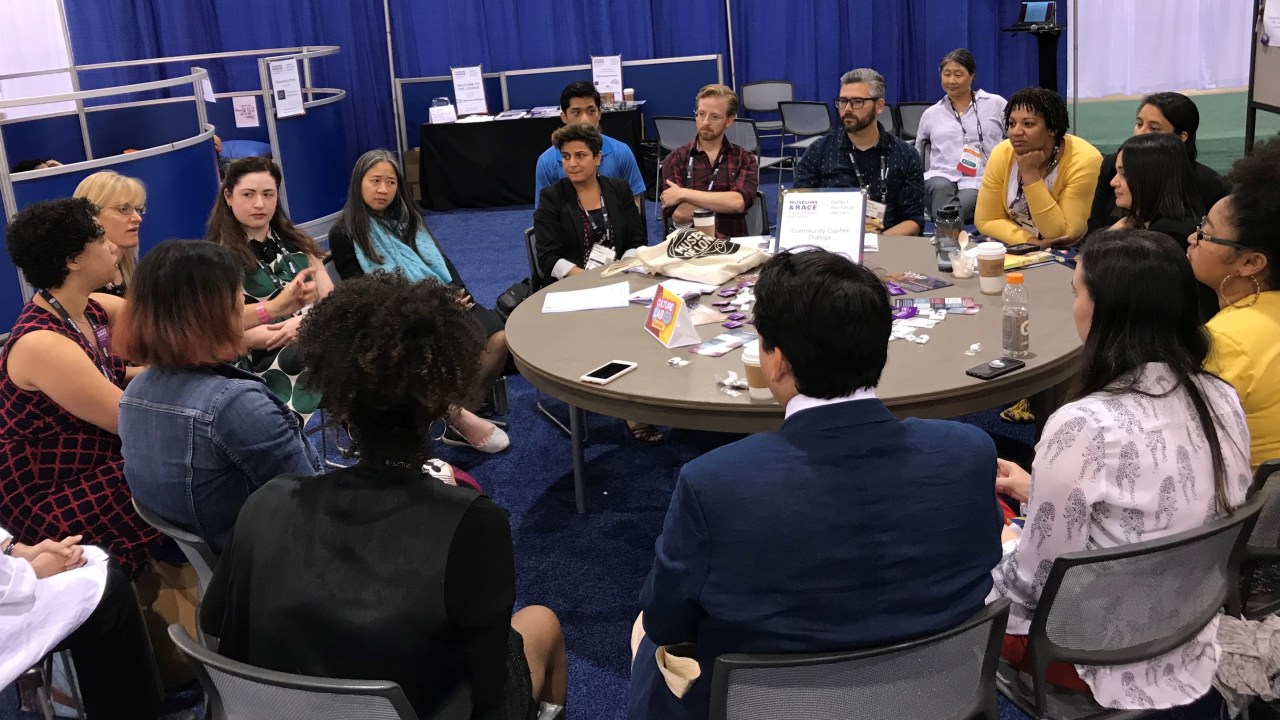
Museum workers often fulfill singular positions in their institutions. The annual American Alliance of Museums (AAM) conference is one chance to meet up with global peers. These tribespeople understand the nuances of the work, and so collectively they can move directly into the meat of the work. Participants are able to intellectually move from zero to sixty, as little on-boarding is needed. The conference becomes like an intellectual bubble. Ideas can be heard, internalized, and discussed. Social learning and comradery make conferences, unlike literature review. Real people interact and improve the field.
After a few days cosseted in this likeminded intellectual and social environment, returning to the office can be challenging. The pressures of the office and home return quickly. Emails overflow in the inbox. Personal responsibilities need to be handled. Office colleagues have work needs.
Conferences can feel like a wedding weekend, an all-consuming moment that doesn’t carry into your real world. However, their power is the ability to place your real life into focus. Simple tactics to organize and extend the conference, like those above, can amplify the personal impact of attending a conference.
How do you maintain your sanity as well as the positive learning environment of the conference? Begin by organizing ideas from the conference.
Your Ideas
Conferences are a huge expenditure of time. The 3-5 days away from the office can essentially add 6-10 days of work to your plate, given that you need to catch up on emails as well as live meetings. When you are adding so much to your workload, you can easily feel too overwhelmed to come down from the conference. While immediately dealing with your office work seems productive, this approach is short-sighted.
Instead, when you return to the office, take some time to write out a download of your conference. (Here is an example). I create a one-page summary of each conference that I attend. This type of short document requires synthesizing huge amounts of information, nominating high-level importance to some elements, and drawing connections between ideas. This document can be just for you or something that you disseminate to others in your organization (as a means of extending the reach of your conference experience to others).
Other People’s Ideas
Conferences are where people are convened around ideas. The sudden absence of this type of community of learners can feel discombobulating. Social media can serve as a substitute. In the first few weeks after a conference, many participants will pass on their ideas on in blogs and on Twitter. Keep checking back at the hashtag for updates.
Also, Twitter Moment is a useful tool to keep track of some of the best ideas from the conference. Look for moments created by others. (Here is one that I created). Also, consider making your own Twitter Moment to keep your own favorite tweets. Once you are done, make a note of a few ideas on which you would like to follow up. Make yourself accountable for putting a few of these ideas into practice. Put these benchmarks on your calendar.
Other People
Conferences are full of wonderful people, with smiling faces in hallways and on escalators. This blast of social energy can be hard to come down from. When you return home, place some of your social energy into your private life. They will help you detox from all that people time.
For those who feel spent from all that social time, recharge yourself by reverting into your private life. Take time with your hobbies and diversions. Recharging yourself is the best way to prepare yourself.
Finally, when you feel centered at home, choose a few conference connections to ping. Make an appointment to chat a few months after the conference. Reach out about a future proposal. Or, just connect over social media.
Conclusion
Practically, this type of conference recapping can feel hard to slide into your work schedule. Consider slotting in one-half hour per day until you feel you have finished your conference recaps. In order to handle the stress of the backlog, balance conference recap with the same amount of time to beat down your email or unfinished work tasks from your time away from your desk.









Thank you, Seema. These tips are incredibly helpful. I learned some new techniques in here I hadn’t thought of before. I especially appreciate your acknowledgement of how challenging the transition back into office work can be. Thank you!